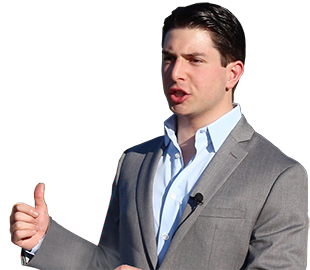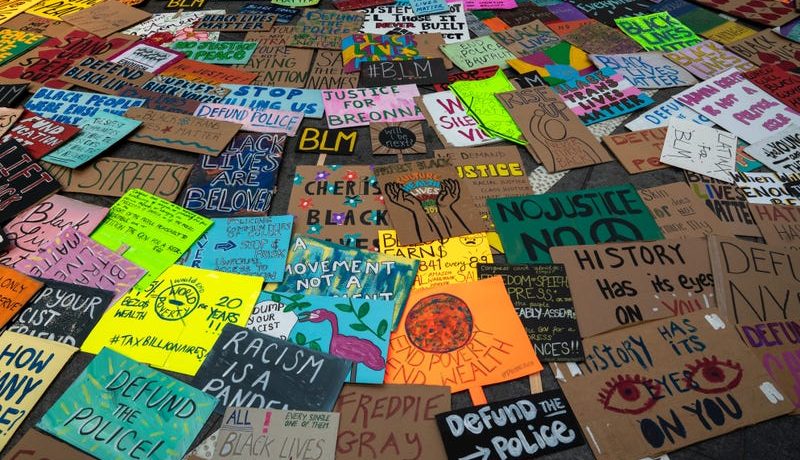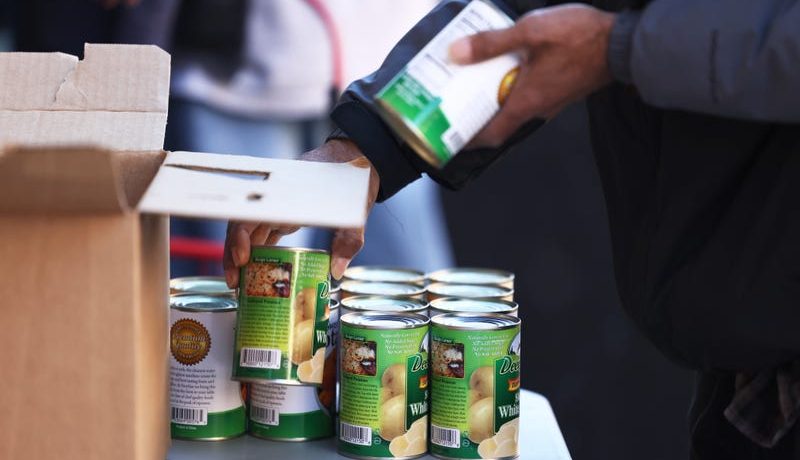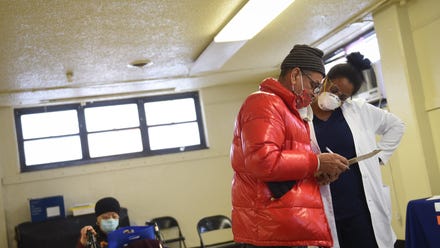
-
Marking One Year of the COVID-19 Pandemic
Post Views: 634NEW YORK (WCBS 880) — It has been one year since COVID-19 reared its ugly head in New York. On The 880 Weekly Rewind this week, Lynda Lopez looks at the past year in the pandemic from the human toll to the lessons learned and how we recover.
https://omny.fm/shows/880-weekly-rewind/cuomo-under-fire-our-year-with-covid-19Plus, WCBS reporter Steve Burns covers a tumultuous week for New York Governor Andrew Cuomo whose emergency pandemic powers were rescinded by the state legislature Friday amid dual scandals in how he handled COVID-19 in nursing homes and allegations of sexual harassment from three women.
Neil A. Carousso produces The 880 Weekly Rewind with Lynda Lopez Friday nights at 7 PM on WCBS Newsradio 880. Listen to this week’s full show on the media player above.
-
State of Black New York: Racial Inequities in Social Justice and Civic Engagement
Post Views: 532By Lynda Lopez, Marla Diamond and Steve Burns
NEW YORK (WCBS 880) — All this month, we’ve been shining a light on the details of a report on equity and race in New York City.
The New York Urban League’s “State of Black New York” raises significant questions on issues like the economy, technology, social justice and civic engagement.
The year 2020 was one of impassioned activism for racial justice as protesters took to the streets and occupied City Hall Park following the police custody death of George Floyd in Minneapolis.
According to the New York Urban League’s report, Blacks are still over-represented in prisons due to decades of over policing and racial bias, with Black youths making up 63% of the jail population.
Bail reform was one bright spot in a difficult year, said Jullian Harris-Calvin, director of the Greater Justice New York at the Vera Institute of Justice.
“I don’t know that we ever expected that bail reform is going to fix all of the racial injustices,” Harris-Calvin said. “It has been successful in many ways, but it has not fixed all of the problems with racism and inequity in the criminal legal process.”
The Vera Institute’s recently-released Empire State of Incarceration report found jail populations fell significantly in the first half of 2020, but the racial disparities grew.
“That obviously is something that we are not happy about and it was certainly an unintended result in terms of what the data shows,” Harris-Calvin said.
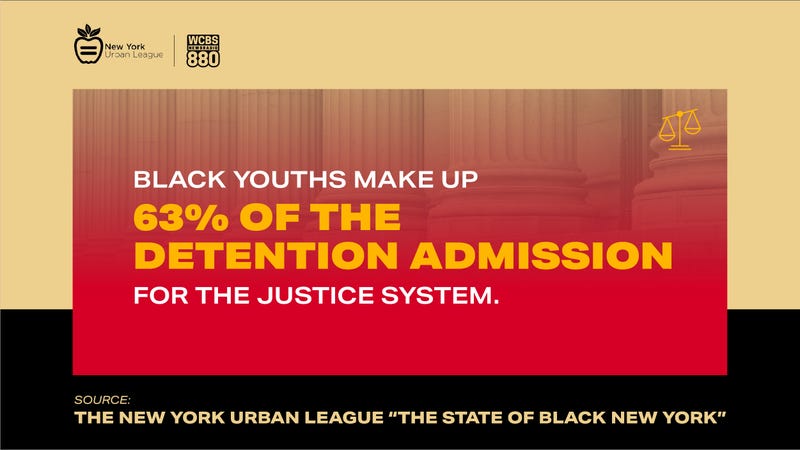
Much of the focus of criminal justice reform is on policing, the trial system and sentencing, said Alexander Horowitz, executive director of New Yorkers United for Justice.
“But where mass incarceration of Black and brown New Yorkers is most pernicious is a place where folks aren’t paying as much attention to, and that’s the back end of the system,” Horowitz said.
He tells Marla Diamond that Black and brown New Yorkers are less likely to be granted parole and when they are, they are 12 times more likely than whites to be jailed on a parole violation.
“We have to talk about who’s being granted parole, and who goes back and why, because if we continue to target Black and brown New Yorkers for reincarceration for non-criminal offenses then we are continuing this horrible legacy of the mass incarceration of Black and brown New Yorkers,” Horowitz said.
The New York Urban League’s report also tackles the question of civic engagement, which our reporter Steve Burns digs into this week.
He spoke with Chi Osse, who has gone from protester to protest leader to now City Council candidate in Brooklyn.
“It’s the craziest thing I’ve ever done in my life,” the 22-year-old said. “I realize that this is bigger than what’s happened in the summer, there’s a lot more to be done, and I’m going to be the one to do it.”
Osse was a ubiquitous sight during the protests last summer, holding court on megaphones and bullhorns across the city.
His announcement came just a few weeks later, channeling his activist energy into local politics.
“We need to bring our voice and our power to the polls,” he said.
At just 22 years old, Osse could represent the new model as we examine how to drive more widespread participation in local and national elections.
The New York Urban League reports voter turnout among African Americans has been trending downward and communities of color were more at risk of being undercounted in the census.
New York’s arcane voting laws also don’t help matters.
“Many New Yorkers would be surprised to know that some states all over the country and even in the south have some more progressive legislation on this front than we have,” said New York State Sen. Zellnor Myrie.
Myrie told WCBS 880 last month that it’s been his mission to take New York from worst to first as chair of the elections committee.
“We think more democracy is better,” Myrie said.
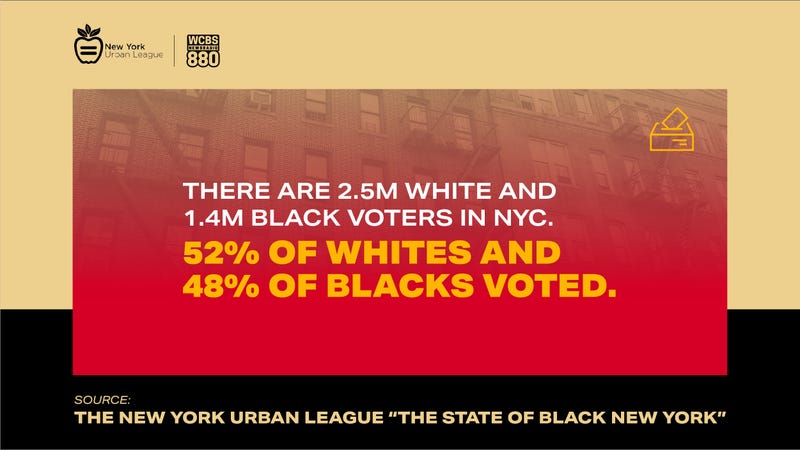
After a test run in 2020, lawmakers are now looking into allowing absentee or mail-in voting without needing a pre-approved excuse first.
“We almost have a culture of absentee voting now, something that very few voters utilized in the past has become one of the main ways that voters have partaken in their democracy,” Myrie said.
New York also enjoyed its first election season with early voting, opening the polls 10 days ahead of Election Day. This year marks the first test for another innovation in the city.
“Ranked choice voting is the process that is going to be used going forward in New York City local primary and special elections,” said Sean Dugar, who is in charge of education and outreach for Rank the Vote NYC.
He tells Burns that giving voters the option to rank their top five candidates instead of just one opens all kinds of civic doors.
“Ranked choice voting forces candidates to no longer talk to a small block of voters in hopes of getting elected, they have to talk to every voter in a district or in a city in order to get not just first choice votes, but second, third, fourth and fifth choice votes which may put them over the top,” Dugar said.
He believes the system levels the playing field and forces candidates to focus on policy rather than personality.
But it hasn’t been without controversy. Members of the City Council’s Black, Latino and Asian Caucus sued in an attempt to stop ranked choice voting this year claiming the outreach hasn’t been there for communities of color.
Dugar disagrees saying, “We’ve done trainings for community groups, we’ve had elected officials host public training, we’ve had the candidates themselves host public training.”
That injunction was struck down, but those council members are appealing.
On a foundational level, Osse said civics education has been lacking.
“I think we need to start educating the youth about not only how to vote and who your electives are, but also how to run,” Osse said, adding that he hopes to be a trailblazer for others, especially those who might not fit the traditional mold of a politician. “This is such a cliché, but be yourself and speak your truth.”
And to do that, there’s no better time than the present.
“If you have a vision and a voice and you have distaste for what’s happening in your neighborhood, or something next door, on your block, speak up about it and maybe there’s someone else that feels that same way about that issue,” Osse said.
As we end the month looking at the issues of race and equity in our community, we wanted to bring in another one of the candidates for mayor of New York City on the topic.
WCBS 880’s Lynda Lopez spoke to Brooklyn Borough President Eric Adams about the racial divide in our community and what he believe we need to do about it.
Lopez started the conversation by discussing civic engagement.
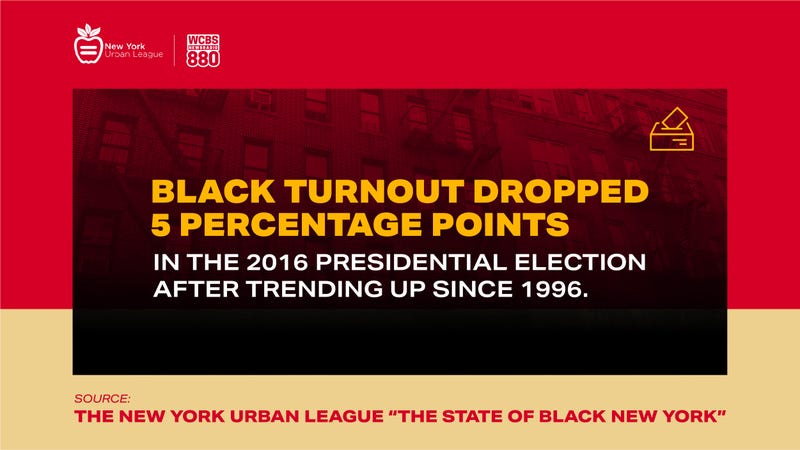
On a national level, there was an increase in engagement among Black voters from 1996 to 2016, and then it plummeted that year. In New York, we have our own voter patterns and issues.
Asked about the challenges in getting communities of color engaged in voting, particularly in a mayoral race, Adams said, “First we have to stop believing that engagement is something you could do in a spot way based on the campaigns that are taking place. It must be built into our school system, we must have an aggressive engagement plan while young people can see and understand how resources for their schools equate into who they elect and how they involve themselves civically, and allow them to volunteer and intern in governmental offices.”
He believes it should be part of the overall requirement in schools to understand local government.
Secondly, Adams said we need to speak with local stakeholders.
“We failed to do that and engage people in a language and the cultural norms that they will understand,” Adams said. “Those are two important areas that we can make real changes.”
Campaigning in the middle of a pandemic poses its own challenges, but Adams said he is continuing to engage voters on the ground.
“We have to give out literature to talk about our campaign, I’m still doing that, but this time I’m wrapping it in face masks and I’m giving instructions on how to avoid COVID-19. We’re standing at food pantries and giving out food and talking to people as we hand out food, not to politic, but just to let them know the consistency of delivering service to every day New Yorkers,” Adams said. “And really informing New Yorkers about those benefits that are available to them.”
Lopez also asked Adams about the social and criminal justice statistics laid out in the New York Urban League’s report, which showed that by 1992, Blacks and Latinos made up 92% of the New York state prison population.
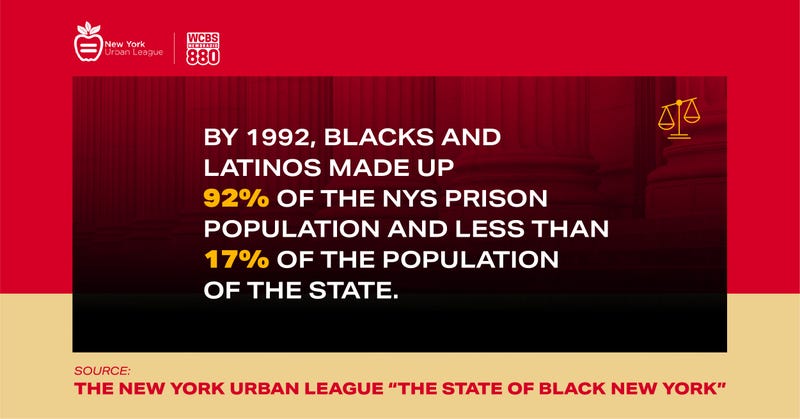
Adams, a former police officer, has more experience in policing in the city than his opponents. Other than the changes implemented in the wake of the summer’s protest, Lopez asked him what the city is now not doing to address the problem head on.
“We have to address the problem on three levels. Number one, real crime that takes place in this city happens in our school system. If you don’t educate, you will incarcerate. You have a failing school system, where 65% of Black students don’t meet proficiency. So if you go to Rikers Island and look at the numbers presumably 30% are dyslexic, 80% don’t have their high school diploma or equivalency diploma, 55% have learning disabilities and so really RIkers Island is a reflection of a failed educational system,” Adam said. “We need to go long term by improving our educational system and then we could do short term things such as foster care.”
He said hundreds of young people age out of foster care at 21 and only 12% will graduate for high school, 3% will enroll in college, and are more likely to be victims of crime or participate in crime.
“If we invest only $50 million a year and allow them to age out at 26 they are more likely to be productive citizens, not involve themselves in criminal justice behavior and really live a productive life,” Adams said. “We have to move from a reactive law enforcement plan to a proactive law enforcement plan and prevent crimes.”
Speaking to education, Adams said closing the digital divide is crucial to solving racial inequities.
“We need to engage into a real conversation about how the city gets involved in ensuring high-speed broadband. We can no longer leave it up to the private companies and entities. High speed broadband and access to internet is no longer a luxury, it is a necessity,” Adams said.
Adams said the people of New York City are not getting their money’s worth and he’s most focused on addressing those failures in his bid for mayor.
“They’re doing their job as taxpayers and they’re paying their taxes, government is not doing its job. Our city is dysfunctional and the dysfunctionality is in our agencies and those inefficiencies in our agencies, they’re leading to the inequalities and in many cases the injustices,” Adams said. “That’s why we see the continuation of Black, Brown, immigrant and poor people are constantly staying in systemic poverty and the goal is to get taxpayers’ dollars operating correctly and we do that by having our city and our agencies become more efficient and that’s what the next mayor must do. We can’t continue business as usual in a city that has had the business of locking out too many New Yorkers.”
Adams said he would be a “blue collar mayor” in the spirit of Fiorello LaGuardia. He believes that his life experience of growing up in poverty, working as a dishwasher and living on the verge of homelessness will help him lead the city because he is in a better position to understand what every day New Yorkers are going through.
“I think the next mayor must be a mayor that has gone through a lot so they could help people who are going through a lot,” Adams said. “It’s time for an everyday New Yorker that understands New Yorkers to help us get out of COVID-19.”
https://omny.fm/shows/880-weekly-rewind/the-j-j-vaccine-legal-weed-and-wrapping-up-racialNeil A. Carousso produces The 880 Weekly Rewind with Lynda Lopez Friday nights at 7 PM on WCBS Newsradio 880. Listen to this week’s full show on the media player above.
-
State of Black New York: Income Inequality and Race
Post Views: 857By Lynda Lopez, Marla Diamond and Mack Rosenberg, WCBS Newsradio 880
NEW YORK (WCBS 880) — We at WCBS 880 and Entercom New York are pleased to partner with the New York Urban League to shine a spotlight on issues of inequity in our community in important areas like health care, education, the digital divide, social justice, the economy, and civic engagement.
Last week, we looked into the racial inequities in health care and education.
As we dig into a comprehensive report released by the New York Urban League titled, “The State of Black New York,” we take a deeper dive into the issues of income inequality and race.
https://omny.fm/shows/880-weekly-rewind/special-report-the-state-of-black-new-york-1As the old saying goes, “If you could make it here, you could make it anywhere,” but according to the Robin Hood & Columbia University’s Poverty Tracker, a majority of Black New Yorkers are barely making it.
The tracker found 59% have lived in poverty for at least one of the past four years and 35% of adult New Yorkers who exit poverty fall back in the following year.
Almost 50% of New Yorkers of color lack sufficient income to meet basic family needs.

Dr. Melony Samuels, of the Beford-Stuyvesant-based food pantry Campaign to Fight Hunger in New York City, sees it every day firsthand.
“We have seen an increase of 1020%. Right now we are distributing food to 14,000 families per week, which is beyond the thoughts of what we could ever think,” Samuels said. “We’re seeing that families are in dire need for food. It has been very, very scary.”
Samuels said in the last survey they conducted, 75% of those that have come for food are there because of unemployment.
The New York Urban League found half of the city’s job growth since 2010 has been in industries with average annual wages under $40,000.
“Sixty-one percent of those we serve do have a job, but they struggle in order to put food on the table, and for obvious reasons. The rents are very high in New York City,” Samuels said.
Before the pandemic, gains were being made in the city’s communities of color, said Noreen Springstead, executive director of WhyHunger.
“The hunger numbers were actually moving down, we were making a lot of progress. As soon as the pandemic hit, they skyrocketed. I think most people have seen those long lines of people in need, really human suffering, looking for food to feed themselves and their families. So it’s not a new problem, however, it has been exacerbated by the pandemic,” Springstead said. “We have skyrocketing hunger. It is the ripple effect and it’s going to take a long time to recover from this hunger crisis.”
Fifty-four million Americans do not have enough food. The undocumented cannot qualify for SNAP benefits to feed themselves or their children.
“The COVID pandemic has really pulled the covers back on what has been true for a very long time — that communities of color suffer at disproportionate rates of health crises, food crises, housing crises, and what it does is creates an opportunity to begin to address those issues much more holistically,” said Sprinstead.
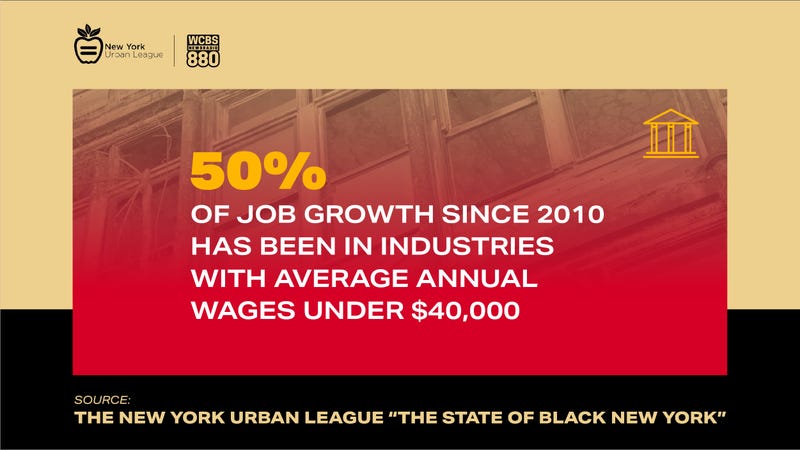
As part of our coverage of this topic, we wanted to engage some of the people running for mayor of New York City to discuss the problems and potential solutions.
Democratic candidate Kathryn Garcia has been in city government for 15 years working in housing, environmental protection and sanitation. Most recently, she worked as the city’s food czar during the early days of the pandemic and saw firsthand the need.
“I think that this is really a tragedy to see these types of numbers, but know that there’s a human face behind them and a human family, usually with kids. And there’s a lot the city can do. Not only does the city need to ensure that we’re supporting people through the safety net programs that we have, but also creating real opportunity for people across the city and particularly for Black people and for women who have shouldered the burden so often in this city and we’re not creating jobs for them,” Garcia said. “That is why I would pair the concept of economic development with workforce development and ensure that those two things go hand in hand.”
Garcia said the city must also guarantee that high-paying jobs are available for students coming out of CUNY.
Garcia is also focused on making the city more affordable.
“First and foremost, when we talk about housing we have to make sure that we are renovating all of the NYCHA apartments and making them high quality places for people to live and raise their families,” Garcia said. “We also need to continue building and build deeply affordable housing for those who are at the lowest incomes levels, but also just make it easier to build housing. We’ve been in a scarcity situation since before I was born.”
Garcia said housing heals.
“We know the virus went rampant in overcrowded housing and got many more people sick because they couldn’t quarantine from each other, we know that it means that you can be much more successful in school, and we know that it’s easier to hold down a job when you have a permanent home,” Garcia said.
Meanwhile, just this week, Mayor Bill de Blasio announced plans to help close the wealth gap in New York City with a program to encourage people to shop at and celebrate Black-owned businesses.
There is no question that COVID-19 has wreaked havoc on local businesses, but studies show that Black businesses are twice as likely to shut down during the pandemic.
There are twice as many white entrepreneurs as Black ones in the city, according to the New York Urban League, and the Black-owned businesses that do exist make up just 2% of the total, and even less than 2% of the employees are Black.
The biggest challenge for Blacks in getting their foot in the door is money. Stats show banks won’t give it to Black as much as they will to whites.
Dawn Kelly, owner of a popular juice bar in Jamaica, Queens, was well aware of those realities when she lost her job in public relations at Prudential a few years ago.
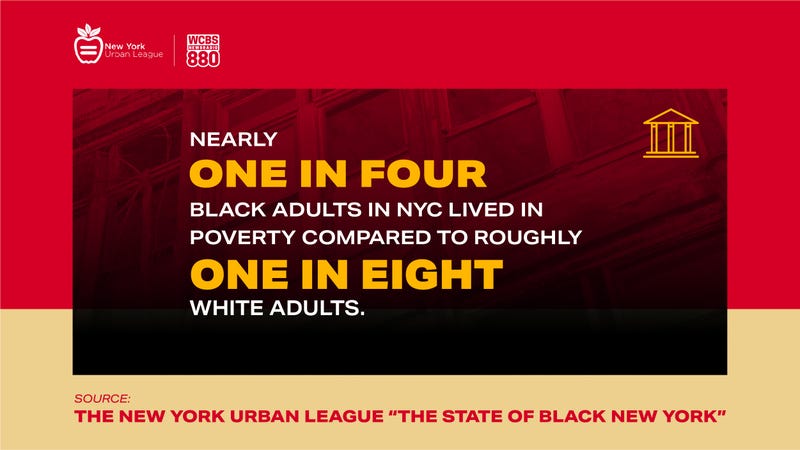
Our Mack Rosenberg asked her whether she thinks she would’ve been able to start her business if she didn’t get a severance package and had to rely on a loan.
“I would tell you that I think it would’ve been challenging and difficult at best,” she said. “The stories are out there. Black people, for the most part, and first time business owners, so I don’t want to just say Black people, but Black people more often than not don’t get the capital from the banks and lending institutions that they need in order to start a business and to sustain a business.”
Aside from her success since opening The Nourish Spot is her success as a mentor to young Black people looking to become entrepreneurs.
Also in on the mission to expand the Black economy is the city’s Small Business Commissioner Jonnel Doris. He started BE NYC, with “BE” standing for Black Entrepreneurs. With funding from the city and big companies like Ernst & Young and Mastercard.
They operate on what Doris likes to call the three M’s — money, mentorship and marketing.
“Help you with access to capital by bringing in new partners like Goldman Sachs and others, making sure that they’re connected to other peers that can help them sort of get through the program, and how do we expand and grow to digital storefronts but also enhance your online presence being that we’re in the pandemic most of what we’re doing online,” Doris said.
He calls Kelly a star, in large part because of her mentoring.
Three young Black people have already started their own businesses thanks to her.
“Because I know more, I must do more. There’s a famous saying in the Black community, ‘To whom much is given, much is required.’ And so I see my life, not really differently than others, I just have made different choices than others, and so because I have had the opportunity to do more, see more, experience more, I see it as my role to teach others,” Kelly said.
Doris said it’s critical for entrepreneurs to help other entrepreneurs like Kelly is doing. But he still sees the financial challenges as a stumbling block.
“These things are critical. What others don’t have to think about when they start a business, the businesses that we’re talking about here today do,” Doris said.
As we round out this week’s reporting on the New York Urban League report on the “State of Black New York,” we wanted to bring in another candidate for mayor.
Ray McGuire has spent his career on Wall Street helping run big companies, including Morgan Stanley and Citi Group.
His is African American and self-made.
Our Lynda Lopez spoke to him this week about his thoughts about the racial divide in the economy.
He said his plan is to lead the largest most inclusive economic comeback in the history of this city.
“Which is to put people to work, give people jobs, move them from no class to middle class,” McGuire said. “My plan is go big, go small, go forward, putting 500,000 New Yorkers to work so that they can earn a wage, earn a living, that takes them from the lower income to the middle income so they can participate in the way that all of us want to participate in this city.”
At the center of his plan, is a focus on infrastructure that includes affordable housing.
“It should not be the case that people make $15,000 to $30,000 a year, who are really essential to how this city works, pay 50% to 60% of their income to rent. That’s not truly affordable, so we need to make certain that we build truly affordable houses,” McGuire said, adding that the digital divide is also an issue he plans to address. “It’s had such a negative impact and profound impact on how we educate our kids and what my plan is, my go big plan, is to focus on building broadband so that people have access. We have 1.5 million New Yorkers, people who are lower income, don’t have access to broadband or mobile and we need to fix that.”
His plan also focuses on small business that he describes as the lifeblood of the communities.
“I have a plan to support the small business with wage concessions, 50% wages, so they can keep their sales tax receipts, so that we cut the bureaucracy and give them relief on many of the fines that have been levied,” McGuire said.
His goal is to uplift the city economically and grow out of this crisis.
https://omny.fm/shows/880-weekly-rewind/cuomos-nursing-home-problem-vaccines-and-texas-powNeil A. Carousso produces The 880 Weekly Rewind with Lynda Lopez Friday nights at 7 PM on WCBS Newsradio 880, including all video content. Listen to this week’s full show on the media player above.
-
State of Black New York: The Racial Divide in Health Care and Education
Post Views: 639By Lynda Lopez, Marla Diamond and Steve Burns, WCBS Newsradio 880
NEW YORK (WCBS 880) — Over the next three weeks, WCBS Newsradio 880 is going to be spending time digging into a comprehensive report released by the New York Urban League titled, “The State of Black New York.”
We at WCBS 880 and Entercom New York are pleased to partner with the New York Urban League to shine the spotlight on issues of inequity in our community in important areas like health care, education, the digital divide, social justice, the economy, and civic engagement.
https://omny.fm/shows/880-weekly-rewind/special-report-the-state-of-black-new-yorkArva Rice, President and CEO of the New York Urban League, said the organization utilized data from Robin Hood & Columbia University’s Poverty and Early Childhood Poverty Trackers and also worked with United Way and the New York Women’s Foundation to provide statistical information on how African Americans are faring in comparison to their White counterparts.
“It’s really important for us to release the ‘State of Black New York’ report this year,” Rice said. “Our national office releases the ‘State of Black America’ on an annual basis and we had not released the ‘State of Black New York’ in over 10 years. In conjunction with our centennial, we wanted to be able to have a clearer baseline of how African Americans were doing in several key areas.”
The report not only lays out issue and statistics, it also includes actionable steps to facilitate change.
“It is important for us to shine the light on inequality, but to also provide some concrete strategies and policy suggestions on how to close those disparities and close those gaps,” Rice said.
As we tackle the report, this week reporters Marla Diamond and Steve Burns focus on health and education.
THE RACIAL DIVIDE IN HEALTH CARE
According to the New York Urban League report, one in four Black adults in New York City faced a health problem in 2018.
Today, they are twice as likely to die from COVID-19 than White people — making up 28% of deaths from the virus despite being only 22% of the city’s population.
Elisabeth Benjamin, Vice President of Health Initiatives at the Community Service Society, said this is the result of the state’s 30-year pro-market agenda.
“This is what structural racism looks like in the health care field. So in the 90s, we eliminated any semblance of regional health planning and centralized it up in Albany with a committee controlled by private and voluntary hospitals,” Benjamin said. “Although charities in name often do not act in very charitable ways toward their patients.”
Reimbursement rates were deregulated, allowing the most powerful hospital systems to get stronger, pushing out smaller community hospitals serving poor Black neighborhoods. The health care burden was pushed onto the city’s hospital system, which strained under the weight of the pandemic.
“So that’s why you see the New York Times and many, many articles about what was going on in Elmhurst, which was sort of the last hospital standing in Queens, versus what was going on in sort of well-heeled Manhattan hospitals,” Benjamin said.
The COVID crisis has revealed layers of inequities that The Rev. Calvin Butts sees firsthand at the Abyssinian Baptist Church in Harlem.
“The virus becomes a problem because cancer is still a problem; the virus becomes a problem because heart disease is still a problem; the virus becomes a problem because diabetes is still a problem. So this really digs deep into an underlying reality that we have not been getting adequate health care in our communities,” Butts said. “And we could go even deeper — the lack of doctors, the lack of nurses, the lack of information.”
The church was the first house of worship in the state to offer the COVID-19 vaccine.
“And we have found that by having the site for vaccinations in the community, in the church, we had more people coming to receive the vaccine who feel more comfortable, who are dealing, they believe, with trusted voices from the community — their pastor, their church, their officers at the church — and this has been extremely successful. We vaccinated now over 1,000 people,” Butt said.
Vaccines are providing some peace of mind. It’s been hard to come by in a community dealing with the twin pandemics of the virus and racial injustice, said Dr. Jamila Codrington, past president of the New York Association of Black Psychologists.
“I’ve had to make more referrals to other clinicians, outpatient mental health facilities, substance abuse clinics, shelters. It’s not just mental health, but domestic violence rates are increasing, alcoholism and drug use is increasing, and these are all comorbidities with mental health,” she said.
A 2017 New York Department of Health report found African Americans are more likely to experience serious mental health problems, but less likely to receive follow up visits after hospitalizations.
Dr. Codrington said that is changing with culturally responsive messaging.
“We have therapy for Black girls, therapy for Black men, and they are making a difference,” she said.
Yet, finding a Black therapist can be difficult, especially for low income New Yorkers.
The American Psychological Association found Black psychologists make up just 4% of all psychologists nationwide.
The New York Urban League’s report was conceived before the COVID-19 pandemic and, as a result, had to be updated because some of the racial disparities were only compounded in the last year.
“The report was designed and ready to go out for distribution and COVID hit our communities and we had this inkling that COVID might impact us more than other places,” Rice said. “As you look at the issues having to do with underlying health issues that face the African American community, we found that COVID started to reach our communities at a higher level.”
So can it be fixed quickly?
“Quickly probably not, but it can be addressed,” Rice said. “There are specific strategies that we need to put in place in order to close that divide that include education, that include access to quality health care, that include dispelling some of the myths, and being able to have access to and encourage healthy eating.”
THE RACIAL DIVIDE IN EDUCATION
Another area where the gap is wide is in education.
According to the New York Urban League report, Black students are two times more likely to fall below proficiency levels in English than their White peers, and three times more likely in math.
As a result, graduation rates and completion rates in high schools for Blacks are much lower than Whites.
The report cites many possibly reasons.
Our Steve Burns takes a look at a few of them.
Jamaal Bowman, U.S. representative for New York’s 16th congressional district, said before he became a middle school principal, he often found himself on the other side of the principal’s desk.
“I was a hot mess in school,” said Bowman. “I used to get in a lot of trouble, I was acting out. I was in the dean’s office a lot. I was handcuffed as a student in middle school.”
In high school, he said he was suspended multiple times — punishments for actions that Bowman now realizes were a product of his environment.
“My father wasn’t around, constantly lying to me telling me he was coming to see me and not showing up. I was angry and frustrated about that, but I didn’t know how to communicate any of that, so that manifested with me acting out at school,” Bowman said.
The congressman says it’s that holistic approach, the understanding that kids come to school with some baggage that should transform our idea of discipline.
“Too often it’s a child acts up, the child is discarded,” Bowman said.
While suspensions have fallen dramatically during Mayor Bill de Blasio’s time in office they are still disproportionately being issued to students of color and students with disabilities, often leading to worse academic performance, more dropouts, and more of the behavior that was being discouraged in the first place.
“White children are looked at as being rambunctious or mischievous, Black and Latino children tend to be looked at as criminal and harmful and dangerous,” Bowman said. “Our kids they’re coming to school with so much on their plates.”
Moving to a restorative approach on discipline would be a big step forward.
“We need to have more policies around ensuring our schools have more social workers and counselors and child psychologists,” Bowman said.
For him, the transformation came when he was able to move to New Jersey to a new environment and center himself through football.
“And ultimately I became an All State football player and ended up playing football in college, so I was lucky. There are millions of kids who don’t get that opportunity,” Bowman said.
From elementary school tests scores, to SAT scores, to graduation rates, the racial disparities in New York City schools are clear.
“So many patterns become entrenched very early on in terms of the life trajectory of our students,” said Paula White, the executive director of Educators for Excellence.
She said universal pre-K for the city was a big step forward, but the momentum shouldn’t be lost.
“Just making sure that the school system is good enough that when they enter that it won’t flatten the gains,” White said.
One way to do that is through AP, or advanced placement courses, but White said there are hurdles for students of color.
“In some districts there is a recommendation process and what that actually does is it serves as a gatekeeper to who can actually take the classes,” White said.
Teacher biases can come into play, as can language barriers.
Despite more Black students enrolling in AP courses in recent years, the New York Urban League says the percentage who pass their AP tests has gone down.White said enrollment on its own is a step in the right direction.
“Exposure to rigor bodes well for later success and persistence in college,” White said. But removing those hurdles to enrollment would help even more. “If there’s just sort of universal access, if you elect to take the course then that just gets rid of one area.”
COVID has had a damaging impact on all communities when it comes to education, but especially those of color, where resources were already thin. So the question now is how do we recover from these losses?
Rice believes recovery will take years.
“When schools closed and moved to digital learning there were some young people who never turned on their computers,” Rice said. “They did not turn on their computers in some cases because individuals did not have them; they did not turn on their computers because there was not the one on one relationship in order to keep that engagement going with individual students; there were families that had four and five children and only access to one laptop. As a result, we are going to be having students who have lost months and months of education, months and months of support, in addition to things like proms and graduation parties and helping support filling out their college applications. The impact of that is going to be felt for years so we’re going to need to develop and create additional supportive services for young people.”
Rice is hopeful for the future and encourages people to do even more work in school buildings and to volunteer at churches, mosques and synagogues to become mentors and reading coaches.
“I have to implore people to be take this as their opportunity to be the change that they have been wanting to see in the world, but if we don’t do anything, if we don’t act in a different way, if we don’t respond to this unbelievable moment in time, then yes, we will lose a generation,” Rice said.
In the weeks ahead, we will be tackling the other issues in the report in greater detail such as civic engagement, the digital divide, the economy and social justice.
https://omny.fm/shows/880-weekly-rewind/new-thinking-on-reopening-schools-and-sports-venueNeil A. Carousso produces The 880 Weekly Rewind with Lynda Lopez Friday nights at 7 PM on WCBS Newsradio 880. Listen to this week’s full show on the media player above.
-
WCBS 880 Weekly Rewind: Dr. Fauci Says Schools Can Safely Reopen with Specific Resources, Opines on J&J’s Less Effective COVID Vaccine
Post Views: 570By Neil A. Carousso and WCBS Newsradio 880
NEW YORK (WCBS 880) — Dr. Anthony Fauci, the nation’s top infectious disease expert, has been at the forefront of the country’s battle against COVID-19 since the virus emerged in the U.S. last year.
Fauci turned 80 years old on Christmas Eve.
He’s been on the job a long time, going through SARS, Ebola, Zika, HIV, to name a few and is now President Joe Biden’s chief medical advisor.
https://omny.fm/shows/880-weekly-rewind/nys-nursing-home-covid-count-dr-fauci-on-schoolsDuring a conversation Friday afternoon with the New York Press Club, moderated by WCBS 880 morning anchor Steve Scott, Fauci was asked, “How much longer will you keep doing this?”
“You know, Steve, I don’t know,” Fauci replied. “I don’t focus on a number. Age number is irrelevant, it’s how you feel. Your functional capability. Are you still able to give it 100% or 110%? Are you still up to the task? As long as that is what I have, namely, the energy, the capability and giving 110%, there’s no limit… I’m pretty honest with myself, I have a real good reality-testing wife who doesn’t hesitate for a second to give me constructive criticism about things. I’ll know when to step down, but I don’t see that in the future right now.”
Dr. Anthony Fauci joined @SteveScottNEWS on a @NYPressClub Virtual Speakers Series event today, saying he believes it would be safe to reopen schools if given certain resources. Hear Dr. Fauci’s thoughts and vaccine analysis on @WCBS880 at 7 PM. #880WeeklyRewind @LyndaLopez08 pic.twitter.com/QDs56sPVOq
— Neil A. Carousso (@NeilACarousso) January 29, 2021During the nearly 40-minute long discussion, Fauci reiterated Biden’s plan to try to get K-8 grade students back in school in the first 100 days, but he admits that there are teachers and others who don’t think it’s safe just yet.
He said part of his job is to try to convince those who have questions about it that it is safe to go back but, only if the rules are followed, such as mask wearing and social distancing.
He stressed the recommendation is for K-8 and that it’s a little bit of a different ball game when it comes to middle, high school and college.
Vaccines are also a key part of the discussion, especially given Johnson & Johnson’s promising news about its one-shot vaccine.
It proved to be 72% effective against moderate to severe COVID-19, which isn’t as impressive as 95%, which Pfizer and Moderna got.
“So although it was not as good as a couple of the others in preventing early symptomatic disease, what it did do very well was prevent severe disease, including hospitalization, death,” Fauci said.
He predicts it could get an emergency use authorization within a week or two, with doses possibly being administered in the U.S. in February.
Fauci was also pressed about working in the Trump administration and his frustration level during that time.
“I don’t want to go back and rehash things, I really want to look forward,” Fauci said. “That’s in the past, let’s take a look at the things we can do to end this outbreak.”
But Fauci did say that he never thought about quitting.
“The enormity of the task and the responsibility that I had was such that it never even entered my mind to step down and quit,” Fauci said. “It was just too important a problem that we were facing.”
Neil A. Carousso produces The 880 Weekly Rewind with Lynda Lopez Friday nights at 7 PM on WCBS Newsradio 880.
The World
Social Feeds

VIDEO: Told the airline to book us on the next flight out (SPONTANEOUS TRIP!)

VIDEO: The Taylor Swift Effect | WCBS Business Breakfast

VIDEO: Future of NYC | WCBS Business Breakfast

VIDEO: Reasons for New Yorkers to be Optimistic | WCBS Business Breakfast

VIDEO: NYC's AI Chatbot | WCBS Business Breakfast

